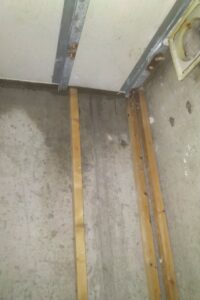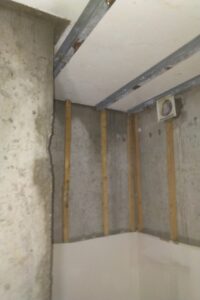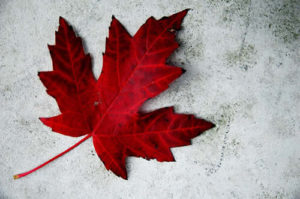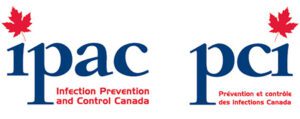Cold Room Mold
Cold Room MoldI’d like to take a few moments to talk about your cold room and cold room mold. Cold rooms are usually never considered when looking for areas of moisture and mold however we consider them significant hotspots for mold growth, right after foundation leaks.
Most homes have a cold room and they are generally used to store food, including jams and preserves. However, these days not many homeowners use them for that and choose to store household items, boxes and such instead.
So when we get called out to inspect for mold in basements cold rooms are one of the top two areas we see as being the source of many mold related issues.
Most cold rooms we run across with mold issues are not properly insulated and / or ventilated, two key areas that help control moisture in your cold room. Without moisture, it can be controlled and / or eliminated.

So, what is mold exactly?
Mold is a tiny fungus that consumes dead matter. As such, molds play the perfectly natural role of decomposer in the outdoors; indoors, however, it’s anything but perfect and natural. Inside, mold can slowly destroy just about every organic element of your home including woods, carpets, and furnishings. In fact, mold can grow on practically anything in your home provided there is enough moisture in the area. Mold reproduces by emitting microscopic spores that float through the air. As you can imagine, too much mold in the air can adversely affect humans. Not only is mold is a known allergen, but it is also a cause of asthma and other respiratory conditions. If not properly controlled, mold can cause major problems for your home and its inhabitants.

So, how do I prevent / stop it in my cold room?
The main source of moisture in your cold room comes from a poor or un-insulated ceiling / walls and secondarily, poor ventilation. A typical cold room ceiling is made of concrete and above that is usually the front landing / entry area outside of your front door. This means that the ceiling in a cold room is typically very cold in the winter and because of this, when the warm air from inside your home hits this cold surface, water vapour / moisture, starts to condensate on the underside of the ceiling. Water will also start to drip down the insides of your walls, soak any interior wood studs and wet the floor. These areas all become primary food source for mold.
Mike Holmes has an interesting piece on cold rooms, (https://homes.winnipegfreepress.com/winnipeg-real-estate-articles/renovation-design/MIKE-HOLMES-Take-the-chill-out-of-your-basements-cold-room/id-1076), that is worth a read.
The correct method of addressing condensation is to add rigid foam insulation to your cold room ceiling and part way down the walls. Use the closed cell type as opposed to white open cell which allows moisture and air to pass through, (closed cell should be blue or pink). Usually I recommend at least two layers be added to the underside of a cold room ceiling. Make sure you add spray foam insulation inside any gaps around the outside of walls and seal the butt joints with a product like red sheathing tape. Make sure the entire ceiling, and areas wherever you’ve installed it, are sealed completely against moisture and air transmission.

Using Fans Effectively
Effectively using fans to prevent mold growth in your home requires proper fan use and maintenance.
Next, if you notice your cold room isn’t ventilated properly, consider installing a ventilation fan. Then, regularly clean your fans as over time dust and/or grease build up, reducing their effectiveness, not to mention creating a fire hazard.
Furthermore, pay attention to where specifically your fans vent to the outside. For instance, if a vent exits the home just under an eave or sheath, that area will be more susceptible to mold damage because it consistently traps the moisture you’re removing from your home. Also, extreme caution should also be exercised with old homes where vents often lead into the attic. The steam or condensation that is routed there stays in the attic space, essentially trapped in a perfect environment where mold damage can run rampant.
Finally, in addition to employing the use of fans, here are a few other suggestions to consider for preventing mold damage. Health Canada recommends the following:
- Open doors and/or windows to increase ventilation.
- Keep indoor humidity low; increase air temperature.
- Notice condensation and moisture as it collects on windows, walls, or pipes. Dry the wet surface and attempt to reduce the source of water or moisture.
- Clean and repair roof gutters regularly.
- Cover cold surfaces, such as cold water pipes, with insulation.
A few more cold room tips;
- Refrain from storing any type of paper products inside the cold room since they can absorb moisture and become the source of mold
- Tag every item inside the cold room
- Place all rubbish outside the cold room, never inside
- Repair all water leaks as soon as possible
- The door of your cold room should be kept closed all the time unless you have decided to keep it as part of the heated area of your home
- If you can, avoid using shelves that are made of wood

Maple Leaf Mold Inc. is a certified mold / asbestos removal and biological disinfection / air analysis company located in Toronto that uses certified IICRC technicians for all testing and remediation projects.
We are a professionally licensed firm experienced in testing, verifying and removing Mold / Asbestos / Lead and other environmental contaminants as well as providing disinfection services to control and kill biological contaminants.
Call 416-254-7256 to talk with us about your issue anytime.



